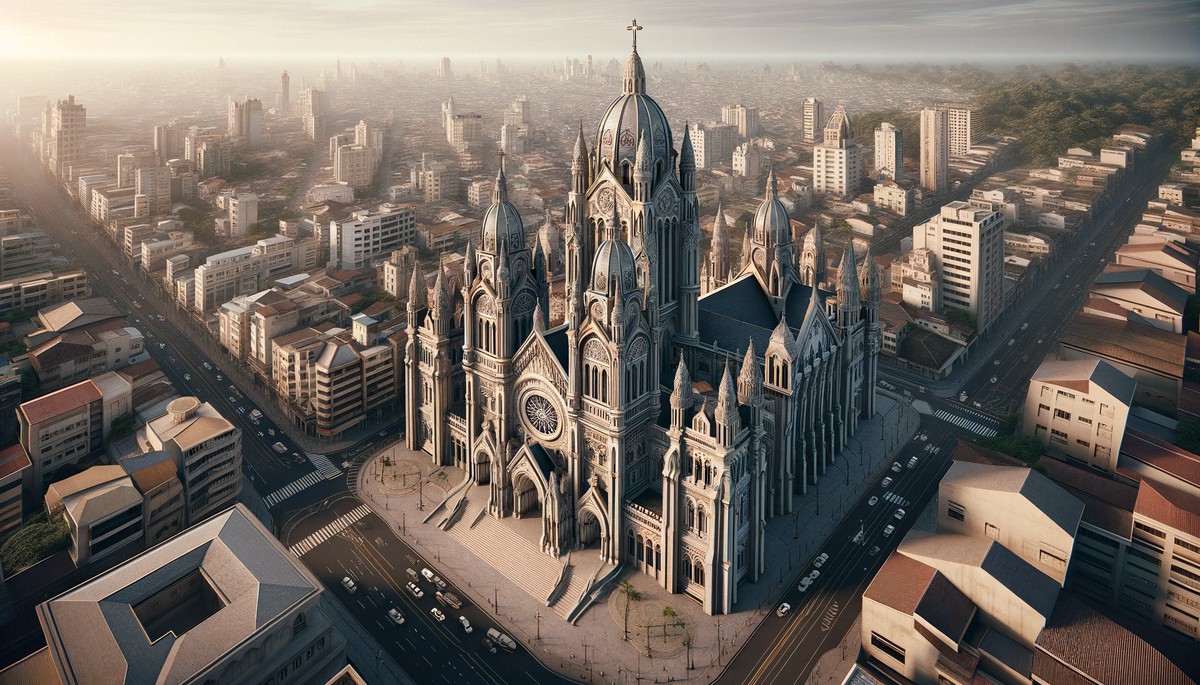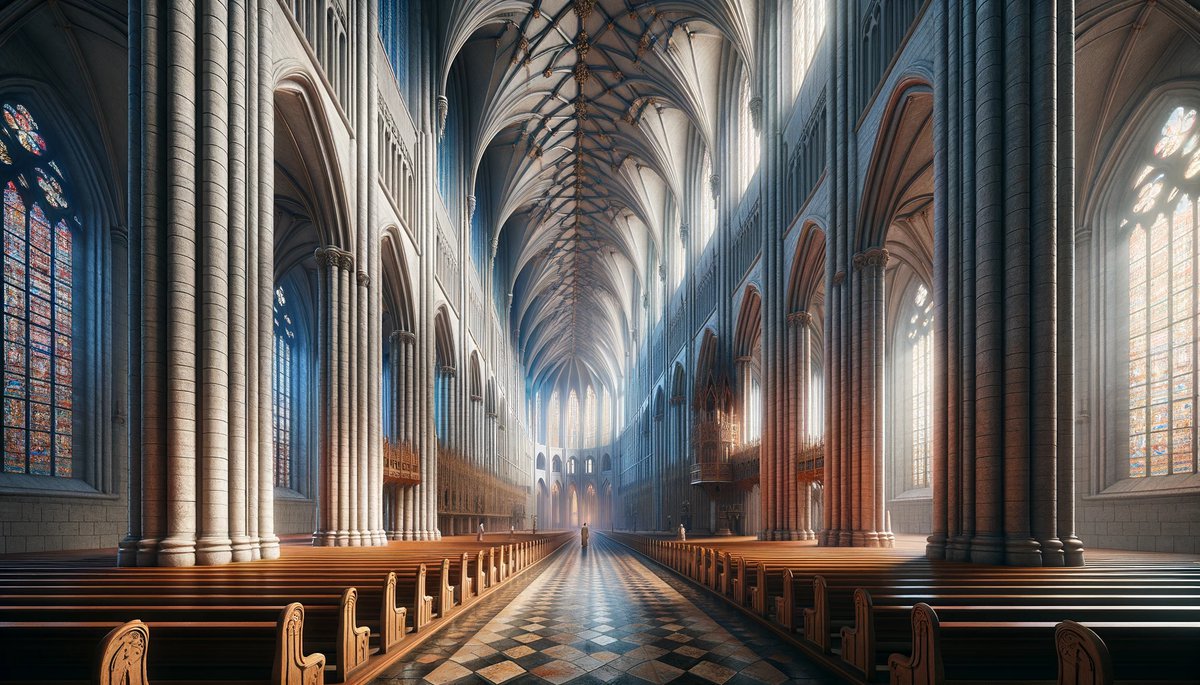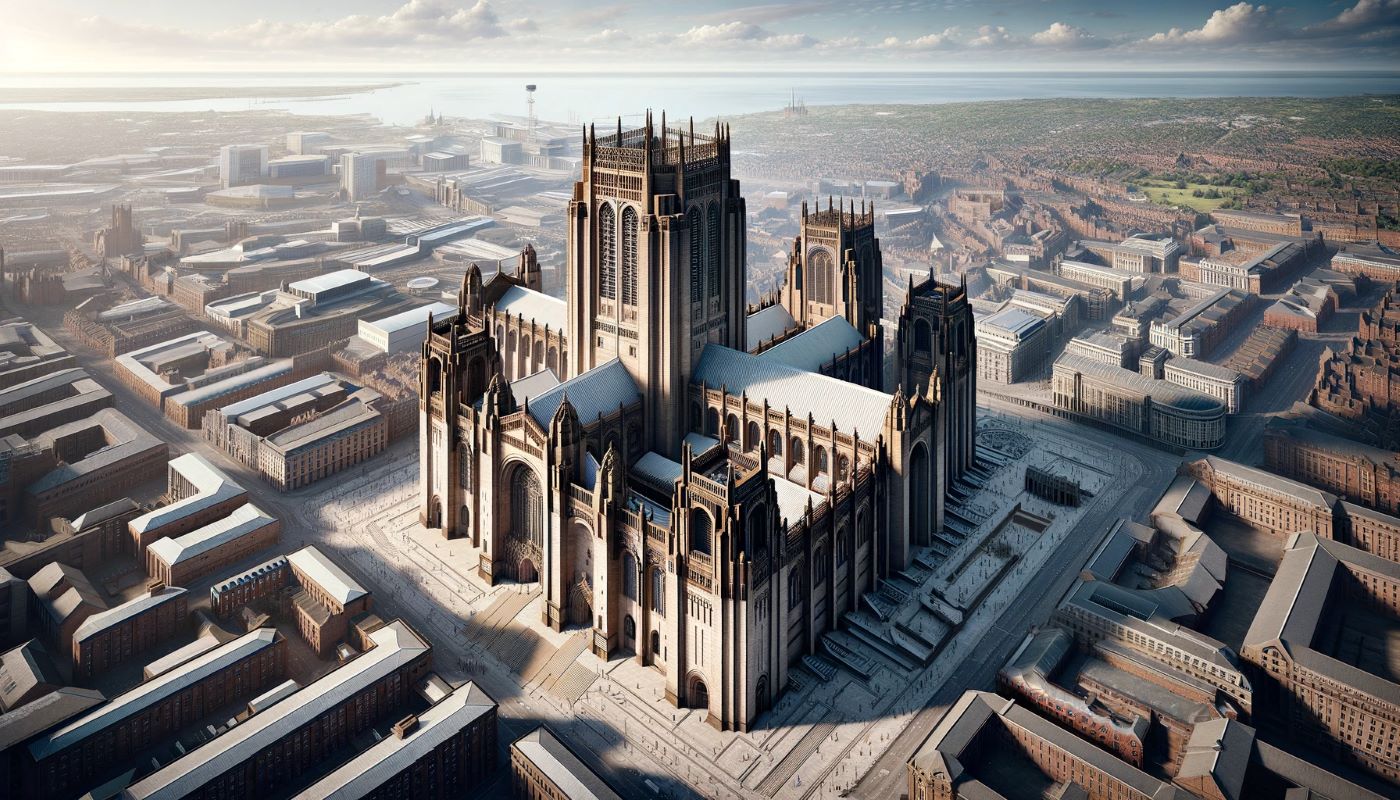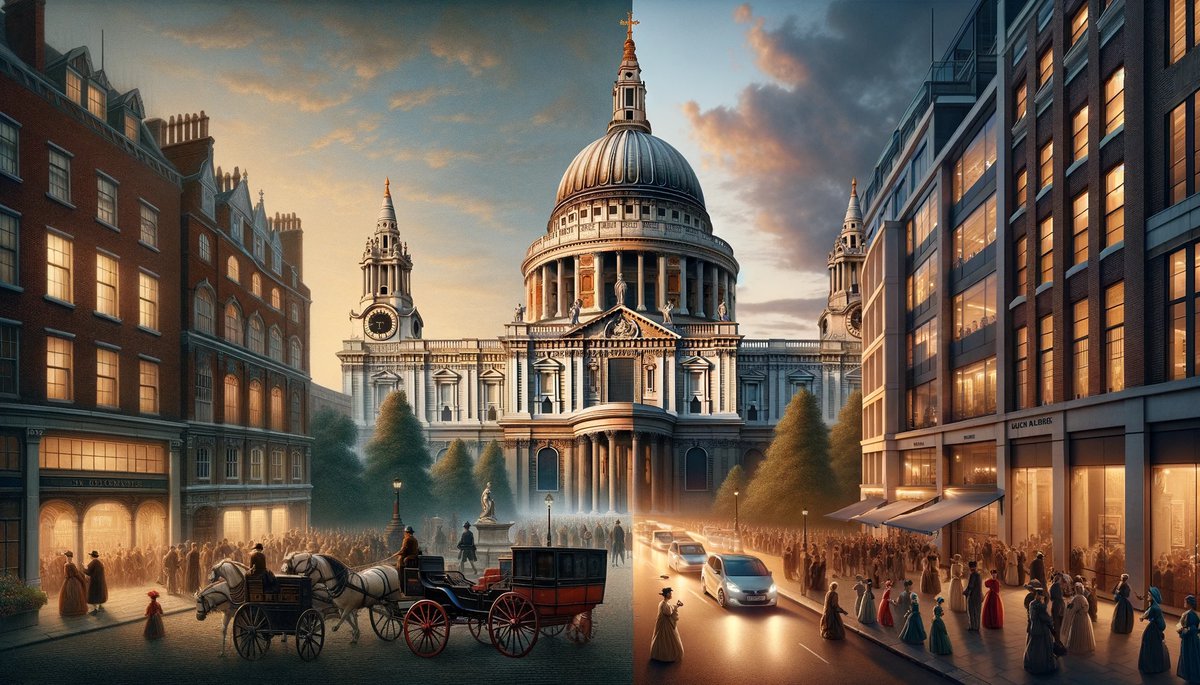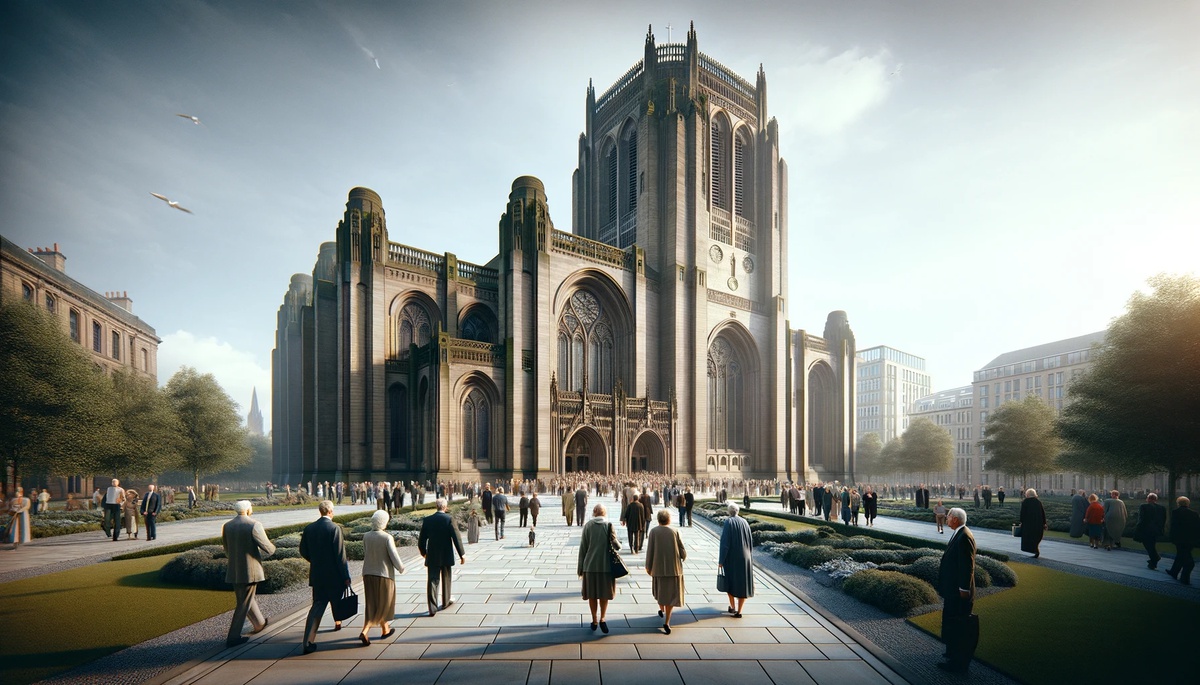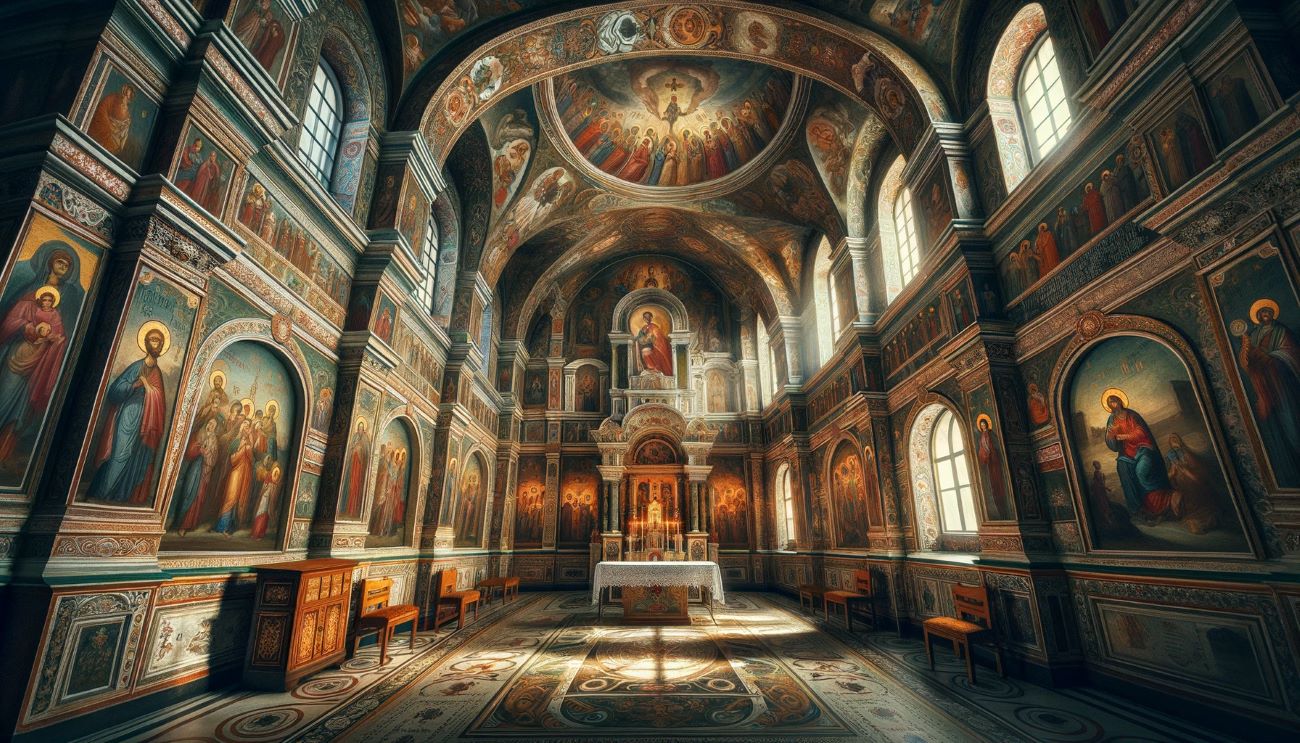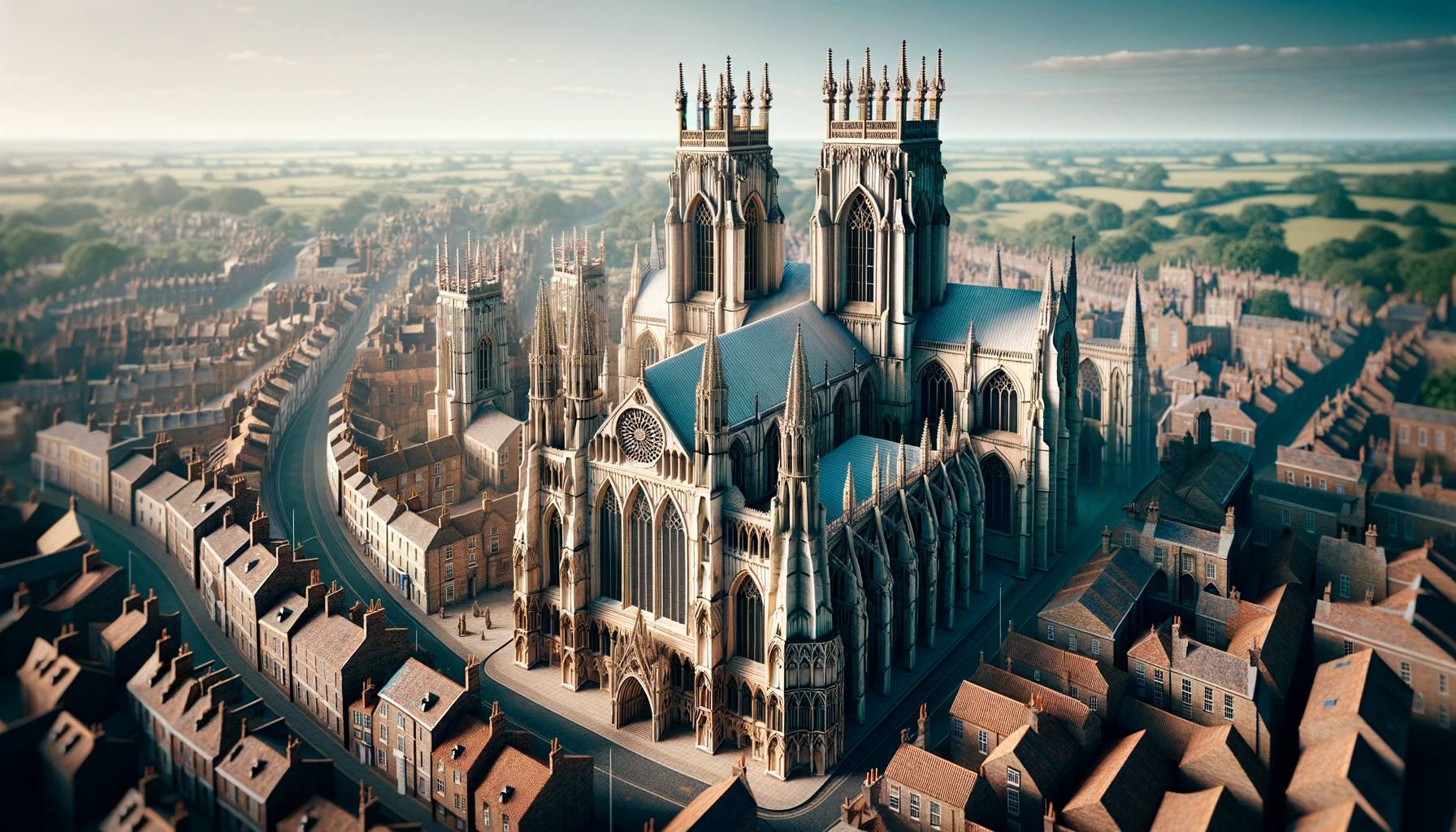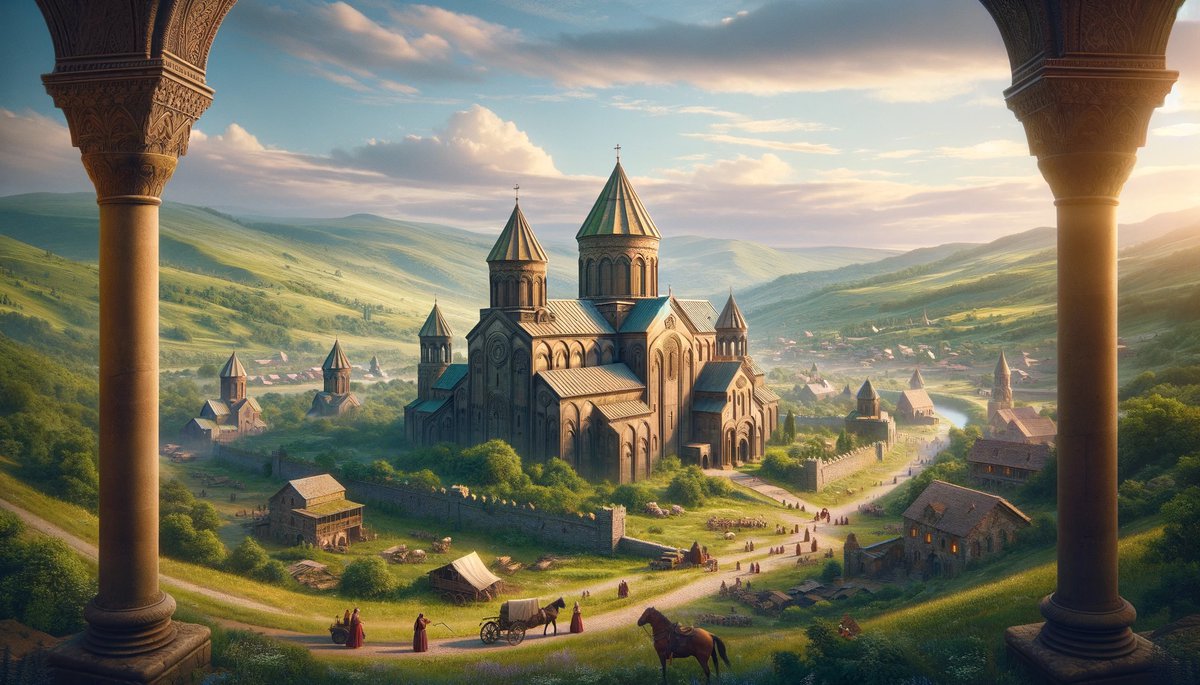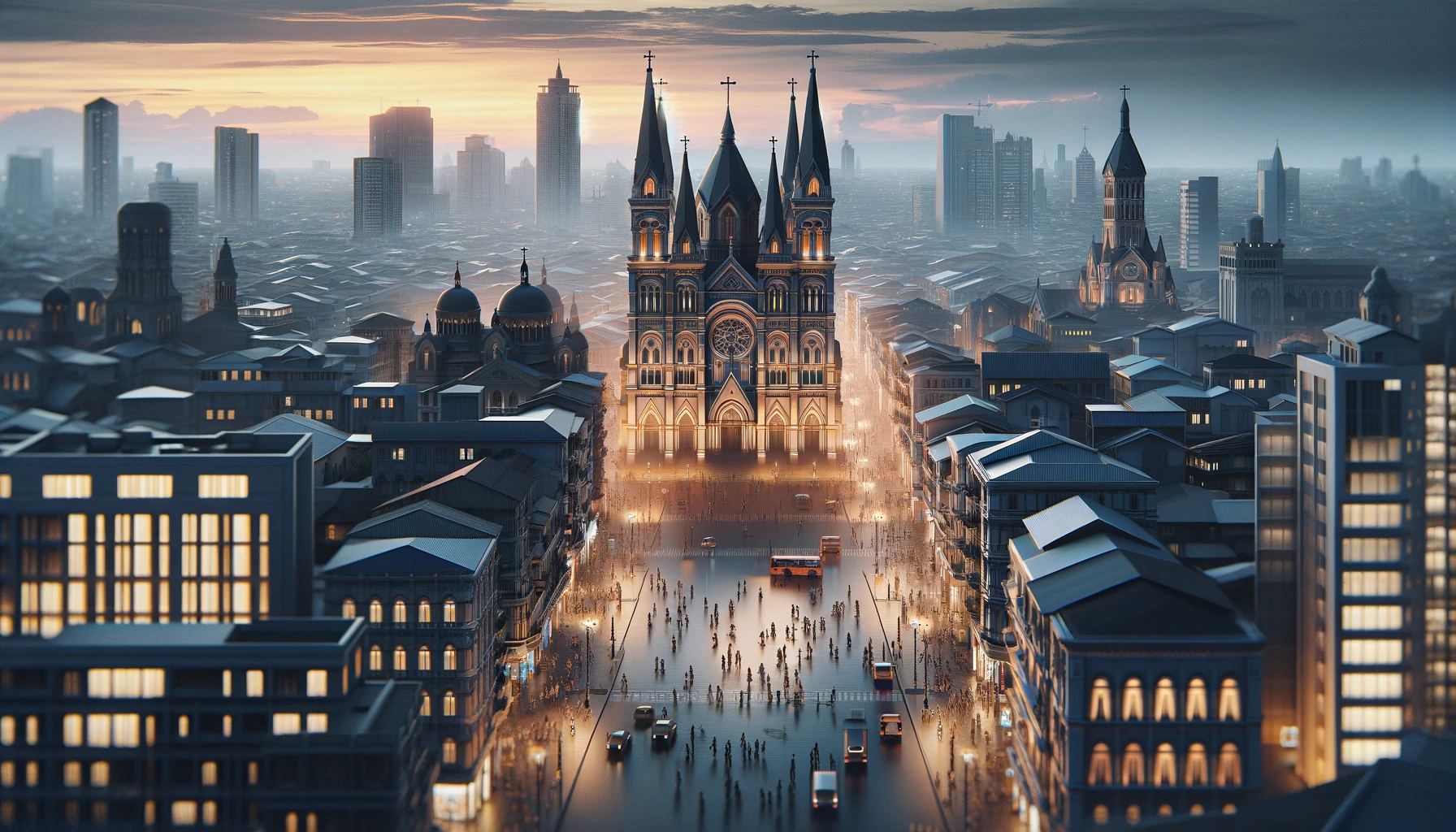Home>Arts and Culture>What Is The Cathedral Of Brasilia Made Of
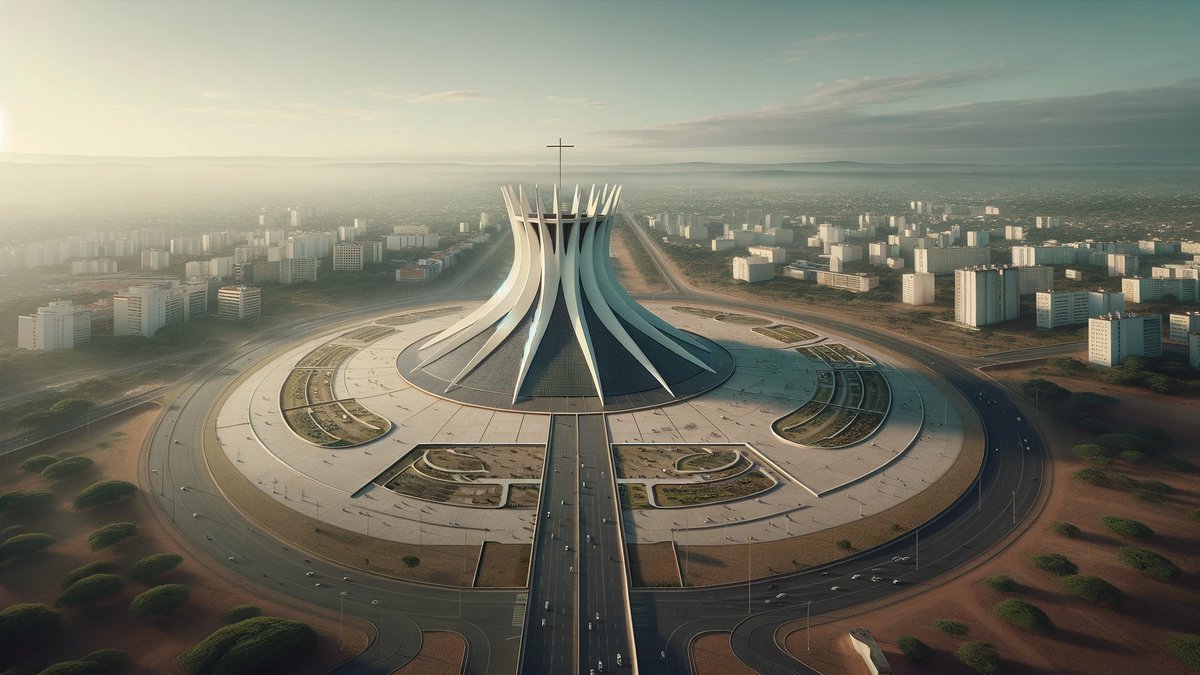

Arts and Culture
What Is The Cathedral Of Brasilia Made Of
Published: February 15, 2024
Ericka Andersen, an editor at Christian.net, expertly merges digital strategy with content creation, focusing on faith and societal issues. Her communication skills enhance the platform's engaging narratives, fostering meaningful dialogue on belief's impact on society.
Discover the architectural marvel of the Cathedral of Brasilia and learn about the materials that make up this iconic symbol of arts and culture. Explore the unique blend of modernist design and religious significance.
(Many of the links in this article redirect to a specific reviewed product. Your purchase of these products through affiliate links helps to generate commission for Christian.net, at no extra cost. Learn more)
Table of Contents
Introduction
The Cathedral of Brasilia stands as a testament to the harmonious fusion of modernist architecture and spiritual symbolism. As one of the most iconic landmarks in Brazil, this architectural marvel draws visitors from around the world, captivating them with its awe-inspiring design and profound cultural significance.
From its inception, the Cathedral of Brasilia has served as a symbol of faith, innovation, and national pride. Its striking silhouette, characterized by towering hyperboloid structures and a crown of shimmering stained glass, evokes a sense of transcendence and spiritual elevation. This monumental structure is not merely a place of worship; it is a living embodiment of the visionary spirit that defines Brasilia, the capital city of Brazil.
In the following sections, we will delve into the captivating history, architectural design, materials used in construction, structural features, and the art and decoration that adorn this magnificent edifice. Each facet of the Cathedral of Brasilia contributes to its profound allure and cultural significance, making it a must-see destination for enthusiasts of art, architecture, and spiritual exploration.
Read more: What Is The Cathedral In Madrid
History of the Cathedral of Brasilia
The history of the Cathedral of Brasilia is deeply intertwined with the visionary urban planning and architectural ambitions that defined the creation of Brazil's capital city. In the late 1950s, Brasilia was conceived as a symbol of Brazil's progress and modernity, with the renowned architect Oscar Niemeyer at the helm of its design. As an integral part of this ambitious project, the construction of a grand cathedral was envisioned to serve as a spiritual and cultural centerpiece for the burgeoning city.
Oscar Niemeyer, renowned for his avant-garde approach to architecture, was commissioned to design the cathedral. His vision was to create a structure that transcended traditional religious symbolism, embodying the spirit of innovation and modernity that defined Brasilia. The groundbreaking ceremony took place on September 12, 1958, marking the commencement of a monumental architectural endeavor.
The construction of the Cathedral of Brasilia was not without its challenges. The innovative and unconventional design presented engineering complexities that demanded meticulous planning and execution. Despite these obstacles, the cathedral gradually took shape, and on May 31, 1970, it was consecrated, marking a significant milestone in the architectural and cultural landscape of Brazil.
The completion of the cathedral represented a triumph of modernist architecture and engineering, solidifying its status as a symbol of faith, progress, and national identity. Its inauguration was a momentous occasion, drawing dignitaries, architects, and admirers from around the world to witness the unveiling of this extraordinary edifice.
Since its inauguration, the Cathedral of Brasilia has continued to captivate and inspire visitors, serving as a testament to the enduring legacy of Oscar Niemeyer and the bold vision that shaped Brasilia. Its history is a testament to the convergence of architectural innovation, cultural significance, and spiritual resonance, making it an enduring icon of Brazil's rich heritage and progressive ethos.
Architectural Design
The architectural design of the Cathedral of Brasilia is a striking embodiment of avant-garde creativity and spiritual symbolism. Renowned architect Oscar Niemeyer, in collaboration with structural engineer Joaquim Cardozo, conceived a structure that defied convention and redefined the traditional concept of a cathedral. The design reflects Niemeyer's commitment to modernist principles, incorporating sweeping curves, bold geometries, and a sense of weightlessness that defies the constraints of traditional architectural norms.
At first glance, the cathedral's exterior presents a series of 16 elegant concrete columns, each soaring upwards and converging to form a crown of ethereal beauty. These columns, with their hyperboloid shapes, create an illusion of movement and fluidity, evoking a sense of spiritual ascension. The absence of traditional walls or windows in the main structure further amplifies the cathedral's ethereal quality, allowing natural light to permeate the interior and create a transcendent ambiance.
The interior of the cathedral is equally captivating, with its vast, open space and minimalist aesthetic. The absence of supporting columns within the nave creates an unobstructed view of the soaring ceiling, enhancing the sense of grandeur and spiritual elevation. The play of light and shadow, facilitated by the strategically placed stained glass panels, imbues the interior with a sense of divine luminescence, inviting contemplation and introspection.
Niemeyer's innovative approach to the design of the Cathedral of Brasilia extends beyond its physical form. The integration of landscape architecture, including reflecting pools and meticulously manicured gardens, creates a seamless dialogue between the built environment and the surrounding natural beauty. This harmonious fusion of architecture and nature enhances the cathedral's serene ambiance, inviting visitors to experience a profound connection to both the spiritual and the natural world.
In essence, the architectural design of the Cathedral of Brasilia transcends the boundaries of traditional religious architecture, offering a contemporary interpretation of spiritual space. Its bold, visionary design continues to inspire awe and reverence, serving as a testament to the enduring power of architectural innovation and the boundless potential of human creativity.
Materials Used in Construction
The construction of the Cathedral of Brasilia required a meticulous selection of materials to bring architect Oscar Niemeyer's visionary design to life. The primary material that defines the cathedral's striking exterior is concrete. However, this is not ordinary concrete; it is a special type known as "white concrete," which was specifically formulated to achieve the desired aesthetic and structural integrity. This unique formulation involved the use of high-quality white cement, which imparts a luminous quality to the concrete, enhancing its visual appeal and allowing it to harmonize with the abundant natural light that bathes the cathedral's exterior.
In addition to white concrete, the construction also utilized innovative techniques to achieve the cathedral's distinctive hyperboloid shapes. Steel reinforcement played a crucial role in ensuring the structural stability of the soaring columns and intricate curves that define the cathedral's exterior. The strategic placement of steel within the concrete framework enabled the realization of Niemeyer's ambitious design, allowing for the creation of sweeping, gravity-defying forms that appear to defy traditional architectural constraints.
Furthermore, the construction of the Cathedral of Brasilia incorporated the use of locally sourced materials, reflecting a commitment to sustainability and a harmonious integration with the surrounding environment. The incorporation of natural elements, such as locally quarried stone and indigenous woods, served to root the cathedral within its cultural and geographical context, fostering a sense of authenticity and connection to the land on which it stands.
The meticulous selection and utilization of these materials were essential in bringing Niemeyer's bold vision to fruition, ensuring that the Cathedral of Brasilia stands as a testament to the innovative potential of architectural materials and techniques. The thoughtful integration of white concrete, steel reinforcement, and locally sourced materials not only contributed to the structural integrity of the cathedral but also imbued it with a timeless elegance that continues to captivate and inspire visitors from around the world.
Structural Features
The Cathedral of Brasilia boasts a myriad of structural features that distinguish it as a groundbreaking architectural masterpiece. At the forefront of its structural marvel is the striking arrangement of 16 gracefully curving concrete columns, each soaring skyward to converge at the apex of the cathedral. These hyperboloid columns, with their elegant and sinuous forms, create a sense of dynamic movement and fluidity, defying the traditional rigidity associated with monumental structures. The interplay of light and shadow across the undulating surfaces of these columns imbues the cathedral with an ethereal quality, evoking a profound sense of spiritual elevation.
The absence of traditional walls within the main structure further accentuates the cathedral's unique structural composition. Instead of enclosing the space, the columns create an open framework that invites natural light to permeate the interior, casting ever-changing patterns of illumination that dance across the expansive floor. This deliberate design choice not only enhances the cathedral's visual allure but also fosters a sense of openness and connection to the surrounding landscape, blurring the boundaries between the built environment and the natural world.
In addition to its soaring columns, the Cathedral of Brasilia features a crown of shimmering stained glass that crowns the structure, adding a captivating interplay of color and light to the architectural ensemble. The stained glass panels, designed by renowned artist Marianne Peretti, infuse the interior with a kaleidoscopic spectrum of hues, casting a luminous glow that bathes the sacred space in a transcendent ambiance. This interplay of light and color serves as a testament to the cathedral's structural ingenuity, seamlessly integrating art and architecture to create a multisensory experience that captivates and uplifts all who enter its hallowed halls.
Furthermore, the cathedral's interior space is characterized by its vast, column-free nave, which creates an unobstructed vista of the soaring ceiling. This architectural feat, achieved through meticulous engineering and innovative design, imparts a sense of grandeur and spiritual transcendence, inviting visitors to gaze upward in awe and contemplation. The absence of supporting columns within the nave not only enhances the cathedral's visual impact but also fosters a sense of unity and openness, allowing for uninterrupted communion with the celestial expanse above.
In essence, the Cathedral of Brasilia's structural features transcend the conventional boundaries of architectural design, embodying a harmonious fusion of form, light, and space. Its innovative composition, characterized by sweeping curves, luminous glass, and a sense of weightless grandeur, stands as a testament to the enduring power of human creativity and the boundless potential of architectural innovation.
Read more: What Is Florence Cathedral
Art and Decoration
The Cathedral of Brasilia stands as a testament to the seamless integration of art and architecture, with its interior adorned by a mesmerizing array of artistic elements that elevate the spiritual and aesthetic experience of visitors. At the heart of the cathedral's artistic ensemble is the stunning collection of stained glass panels that grace its soaring interior. Designed by the acclaimed artist Marianne Peretti, these vibrant stained glass panels infuse the sacred space with a kaleidoscope of luminous hues, casting an ethereal glow that envelops worshippers and visitors alike.
Marianne Peretti's masterful use of color and light in the creation of the stained glass panels transcends traditional religious symbolism, offering a contemporary interpretation of spiritual illumination. Each panel serves as a vibrant tableau, depicting abstract forms and evocative patterns that evoke a sense of transcendence and divine radiance. The interplay of natural light with the radiant colors of the stained glass creates a dynamic visual symphony, transforming the cathedral's interior into a luminous sanctuary that inspires introspection and awe.
In addition to the captivating stained glass, the Cathedral of Brasilia features a series of striking sculptures that enrich its sacred ambiance. The centerpiece of the interior space is the suspended angelic sculpture, crafted by the talented artist Alfredo Ceschiatti. This ethereal sculpture, with its graceful and fluid form, exudes a sense of celestial elegance, serving as a poignant symbol of spiritual grace and transcendence. The presence of Ceschiatti's angelic sculpture within the cathedral's lofty expanse adds a profound layer of artistic and spiritual significance, inviting contemplation and reverence.
Furthermore, the cathedral's minimalist interior serves as a canvas for the interplay of light and shadow, creating ever-changing patterns that dance across its pristine surfaces. The absence of ornate embellishments and the emphasis on clean, unadorned spaces imbue the cathedral with a sense of serene austerity, allowing the artistic elements to take center stage and command attention. This deliberate design choice fosters a contemplative atmosphere, inviting visitors to engage with the interplay of art, light, and space in a deeply personal and introspective manner.
In essence, the art and decoration within the Cathedral of Brasilia transcend traditional religious iconography, offering a contemporary and transcendent interpretation of spiritual expression. The harmonious integration of stained glass, sculptures, and the interplay of light and shadow creates a multisensory experience that captivates the senses and elevates the spirit, making the cathedral a living testament to the enduring power of artistic vision and creative expression.
Conclusion
In conclusion, the Cathedral of Brasilia stands as a testament to the boundless potential of human creativity, architectural innovation, and spiritual expression. From its inception as a visionary symbol of Brazil's progress and modernity to its enduring status as an iconic architectural masterpiece, the cathedral embodies a profound fusion of art, culture, and faith. The history of its construction, guided by the visionary genius of architect Oscar Niemeyer, reflects a bold commitment to redefining the traditional concept of a cathedral, transcending the boundaries of conventional design and embracing a spirit of avant-garde creativity.
The architectural design of the Cathedral of Brasilia, characterized by its sweeping curves, soaring columns, and luminous stained glass, offers a contemporary interpretation of spiritual space, inviting visitors to experience a profound sense of transcendence and awe. The innovative use of materials, including white concrete and steel reinforcement, underscores the cathedral's structural ingenuity, while the integration of locally sourced elements fosters a sense of authenticity and connection to the land on which it stands.
The cathedral's structural features, including its soaring columns, open framework, and luminous stained glass, create a multisensory experience that captivates the senses and elevates the spirit. The harmonious integration of art and decoration, from the vibrant stained glass panels to the ethereal sculptures, enriches the cathedral's sacred ambiance, inviting contemplation and reverence.
In essence, the Cathedral of Brasilia transcends the conventional boundaries of architectural design, serving as a profound testament to the enduring power of human creativity and the transformative potential of visionary architecture. Its legacy as a cultural and spiritual icon continues to inspire visitors from around the world, inviting them to witness the harmonious convergence of art, architecture, and faith in a transcendent and awe-inspiring sanctuary.

